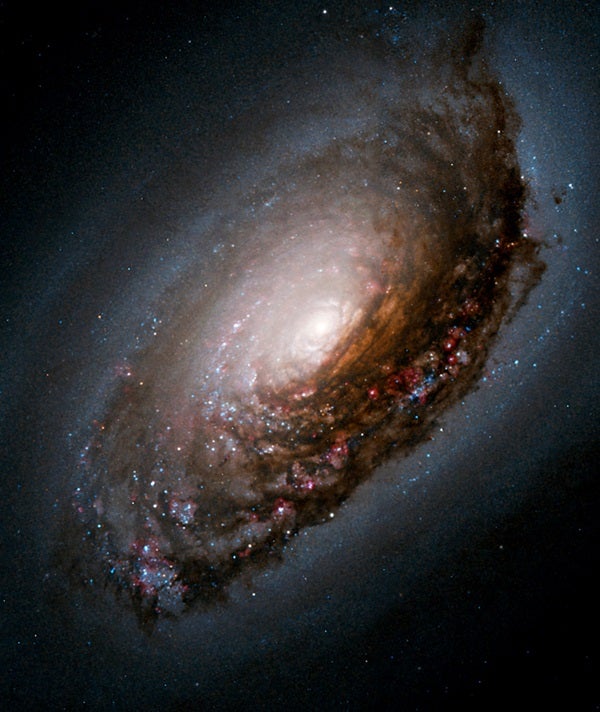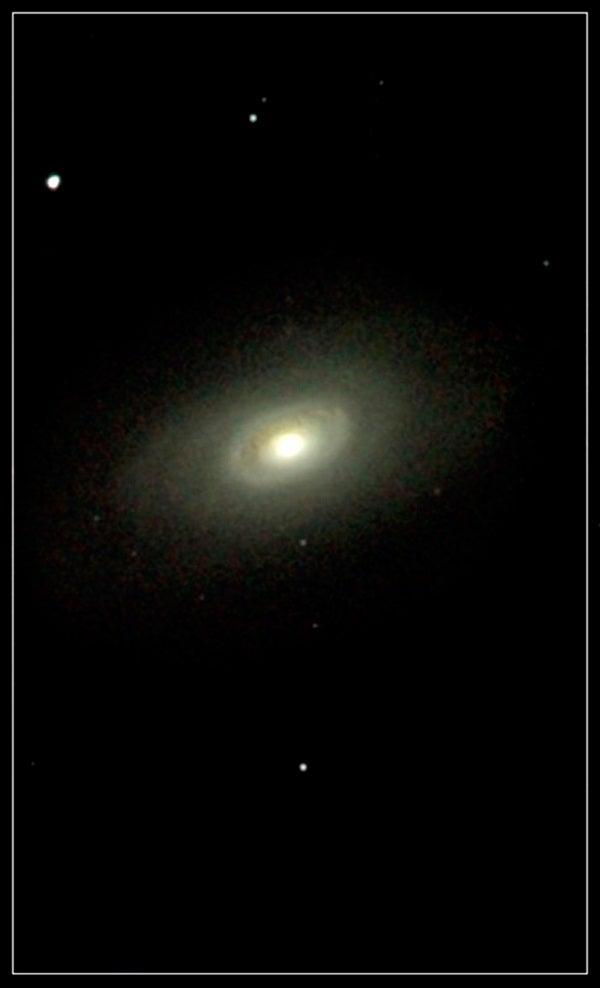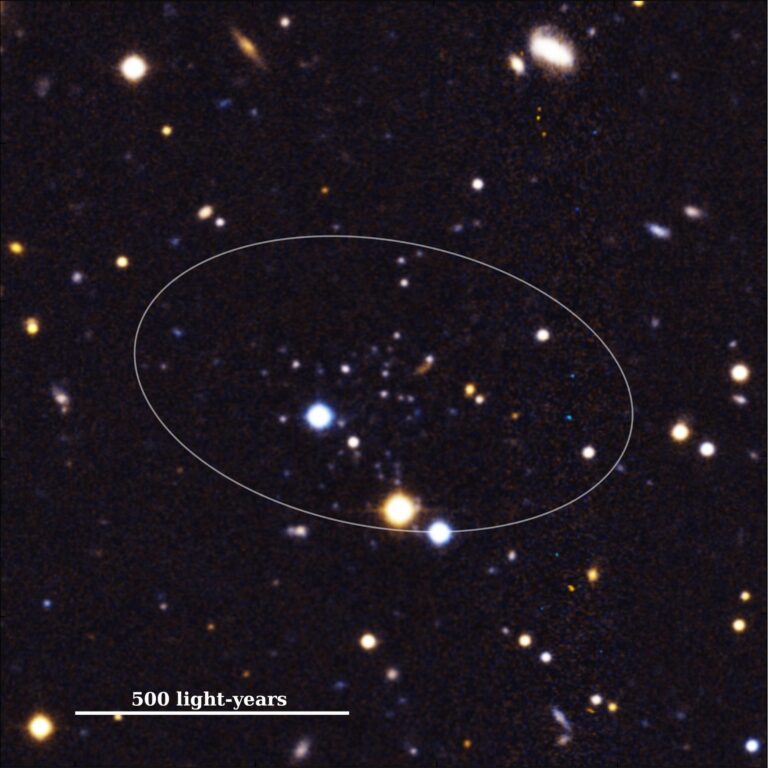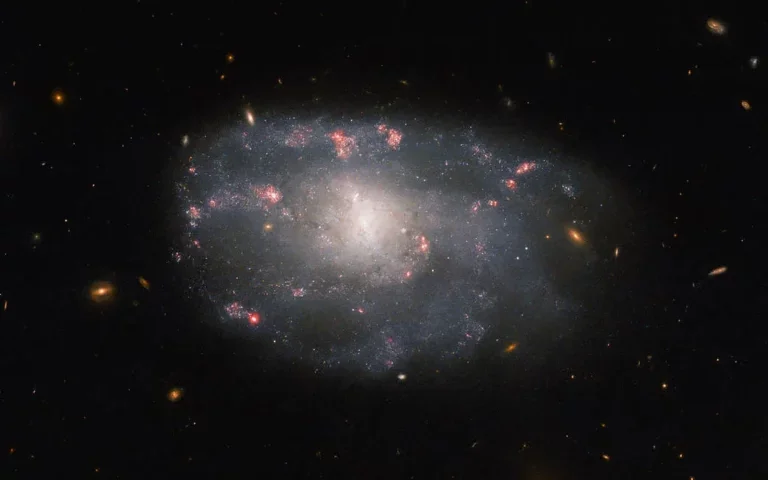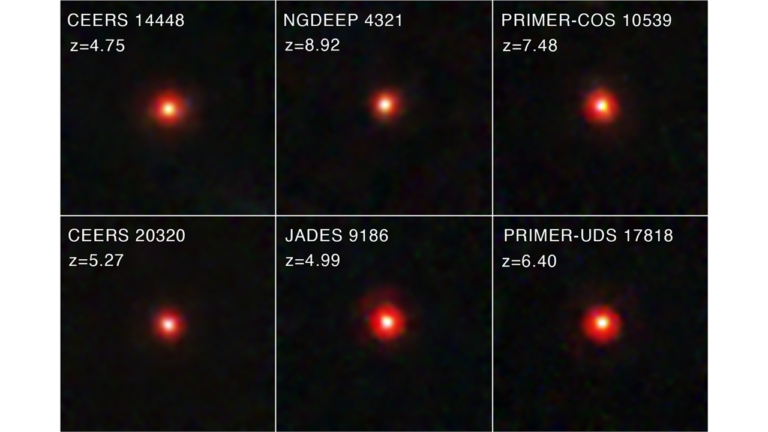Galaxy M64 has not been normal for the past billion years, and neither have our encounters with it. Even its discovery fails to be straightforward, as only in the past decade have we known that it was actually found by English astronomer Edward Pigott. Today, he remains little known despite also discovering the first Cepheid — the variable stars that help astronomers uncover cosmic distances.
Pigott’s discovery of M64 on March 23, 1779, occurred just 12 days before German astronomer Johann Bode found it, and a year before French astronomer Charles Messier independently rediscovered it and added it to his famous catalog as Messier 64. Because Pigott’s discovery remained unknown until it was read before the Royal Society of London in 1781 — more than a year after Messier’s published account (and this fact only came to light in 2002) — most references still credit one of the other two.

Bringing the universe to your door. We’re excited to announce Astronomy magazine’s new Space and Beyond subscription box – a quarterly adventure, curated with an astronomy-themed collection in every box. Learn More >>.
Regardless, M64’s odd nature soon became obvious when William Herschel’s superior instruments superseded Pigott’s and Messier’s rudimentary telescopes. Just a few years after discovering Uranus, Herschel compared the enormous black blotch on this galaxy to a “black eye” — a label that caught on and remains in use, making M64 the first and only celestial object named for an injury. Several reference texts list its more attractive name, “Sleeping Beauty Galaxy,” but, unfortunately, no one currently uses it. However it’s labeled, the unique blackness enveloping a huge part of this otherwise normal-looking spiral galaxy is its calling card.
M64 floats in the constellation Coma Berenices, which officially honors the hair of Queen Berenice II of Egypt but actually resembles 12-gauge shotgun pellets. With the advent of the 200-inch Hale Telescope in 1948, astronomers realized the black feature is a huge complex cloud of carbon particles surrounding a bright inner zone, while spectroscopy later revealed odd waves of star formation that jumped from one section of the galaxy to another over time. The newest flurry of star birth only now seems to be reaching the vast dusty region, which should start coming alive with bright blue patches in later epochs.
Since its discovery story, name, appearance, morphology, and constellation are all odd, it’s no surprise that M64’s strange tale does not stop there. Measurements of the motions of its component stars show that, unlike normal spiral galaxies that grandly rotate in a single direction, M64 is made of counter-rotating segments. The inner 3,000-light-year radius spins clockwise, while the galaxy’s remaining outer 40,000 light-years moves in the other direction.
How is this even possible? Only one explanation works: Sometime in the past, probably a billion years ago, M64 collided with and gobbled up another galaxy. The two entities merged into one while still housing separate warring factions that continue the motion of their progenitors. The shearing zone where the two opposing gassy segments rub against each other remains a turbulent battleground that instigates collapsing nebular knots and new star production. The huge incongruous dust cloud is leftover material from M64’s former companion. Although it’s been inescapably pulled in, it hasn’t yet had time to fully settle and merge with the pancake-flat plane of the main galaxy’s disk.
It would be nice to know the size of each of M64’s sections. But to obtain such knowledge, we’d need to compare the galaxy’s apparent size with its known distance, and it is here that another oddity arises: We do not know how far away the Blackeye Galaxy lies from us.
Strange indeed. M64 certainly contains Cepheid variable stars and brilliant type O suns whose apparent brightnesses should let us nail down their distances. Nonetheless, experts come up with values that vary more widely than those for any other galaxy. The well-known astronomer R. Brent Tully’s Nearby Galaxies Catalog lists M64 at 14 million light-years away. In his celebrated (if now slightly moth-eaten) Celestial Handbook, Robert Burnham, Jr., says it’s somewhere between 20 to 25 million light-years away, which agrees with the 24-million figure cited in The Night Sky Observer’s Guide by George Kepple and Glen Sanner. Despite these estimates, Swedish astronomer Erik Holmberg puts the distance at 44 million light-years, while a 2004 Hubble Space Telescope press release cites 17 million. The speed it’s rushing away from us — 234 miles (377 kilometers) per second — would correspond with a “Hubble flow” distance of 16 million light-years, but recessional speeds among galaxies in the Virgo-Coma galaxy cluster are often wildly uncorrelated with distance because of gravitational meddling between them. A half-dozen such galaxies even show blueshifts, or approach velocities, as if the universe is collapsing! Without knowing its distance, we simply can’t know M64’s true dimension.
If we assume a compromise distance-value close to what the Hubble folks use, then it’s half the size of our Milky Way Galaxy. But with all that colliding gas and frenzied star-birth activity, it seems to be having much more than half the fun.

